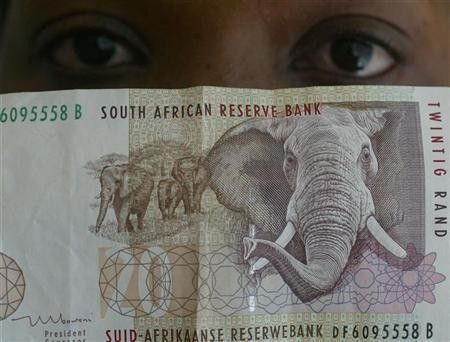South African Economy Grows 3 Percent In Q2: Good, But Not Good Enough

South Africa's gross domestic product, or GDP, grew by 3 percent in the second quarter of 2013, sharply up from 0.9 percent recorded in the previous quarter and comfortably beating a consensus estimate of 2.1 percent, according to figures published Tuesday by the state statistics agency.
While the annualized quarter-on-quarter growth rate is encouraging, it falls short of the 3.3 percent growth predicted by a recent survey of economists by South African newspaper Business Day Live. Furthermore, the apparent growth has much to do with statistics -- given last quarter's disappointing growth rates, South Africa's GDP had nowhere to go but up. Year-on-year growth in the second quarter was in line with expectations at 2 percent, but only marginally up from 1.9 percent in the first quarter.
The last round of quarterly GDP growth figures, released May 28, put quarter-on-quarter growth at 0.9 percent for Q1 -- the slowest rate South Africa has seen since its 2009 recession.
The slump had much to do with manufacturing losses. The sector, which accounts for more than 15 percent of national GDP, shrank by an annualized 7.9 percent in the first quarter, hamstrung largely by maintenance issues such as fire damage and general disrepair, which hurt production capacity. The World Bank responded immediately, slashing growth forecast for 2013 to 2.5 percent, down from a previous projection of 3.2. The IMF followed suit in June, projecting 2 percent growth for the fiscal year, down from 2.8 percent.
The manufacturing sector rebounded between April and June, contributing 1.7 percentage points to South Africa's second-quarter growth. Finance, retail and real estate also are picking up some of the slack.
But, serious long-term problems remain. South Africa is struggling with falling commodity prices, recurring power outages and a weakening currency. But, growth in exports has not grown significantly due to low international demand.
Inflation surged to 6.3 percent last month, raising the cost of living. And, as inflation has exceeded the central bank's target limit of 6 percent, the South African Reserve Bank is likely to keep interest rates at the 5 percent benchmark.
Labor disputes also continue to threaten the viability of South Africa's mining sector. The issue has been a high-profile one since the summer of last year, when clashes between wildcat strikers at the Marikana platinum mine operated by Lonmin Plc (LON:LMI) erupted into violence, killing 34 people on Aug. 16.
The violence has since died down somewhat, but wage negotiations are ongoing -- especially in gold production. The National Union of Mineworkers, South Africa's biggest mining union, is demanding a raise of 60 percent in salaries for entry-level workers at facilities run by producers including AngloGold Ashanti (NYSE:AU) and Sibyane (NYSE:SBGL).
No surprise, then, that mining and quarrying losses had an impact on Q2 growth rates, accounting for a loss of 0.3 percentage points. The government has already reported that, in June, mining production decreased by 6.2 percent year-on-year, and slumps in gold and platinum group metals were the biggest drags.
Investors are understandably spooked, and a worried administration is doing its best to calm fears about ongoing labor disputes by meeting with mining bosses and disgruntled union members. Despite these efforts, strike action is not confined to the mining industry.
On Monday, about 90,000 construction workers walked off the job after talks with the South African Federation of Civil Engineering Contractors fell flat, just as 600 employees of South African Airways also began demonstrating for higher wages. The auto industry also is embroiled in disputes, with strikes affecting several companies including Toyota Motor Corporation (TYO:7203), Volkswagen AG (ETR:VOW) and General Motors Company (NYSE:GM), and costing an estimated $60 million dollars every day in lost output.
Though it boasts the biggest economy in Africa, South Africa's growth rut has become a statistical drag on the rest of the continent, which is fast becoming one of the most economically dynamic regions in the world.
Oil is behind a surge in investment in nearby Angola. Natural gas is spurring incredible growth in Mozambique and Tanzania. Tech innovation and entrepreneurship are driving progress in urban hubs such as Nairobi, Kenya and Accra, Ghana.
South Africa, meanwhile, remains burdened by a yawning wealth gap with about half of its population living below the poverty line, an official unemployment rate of 25.6 percent and political stagnancy. All of which goes to show that quarter-on-quarter growth of 3 percent might not be enough to give the struggling economy the jolt it really needs.
© Copyright IBTimes 2024. All rights reserved.




















